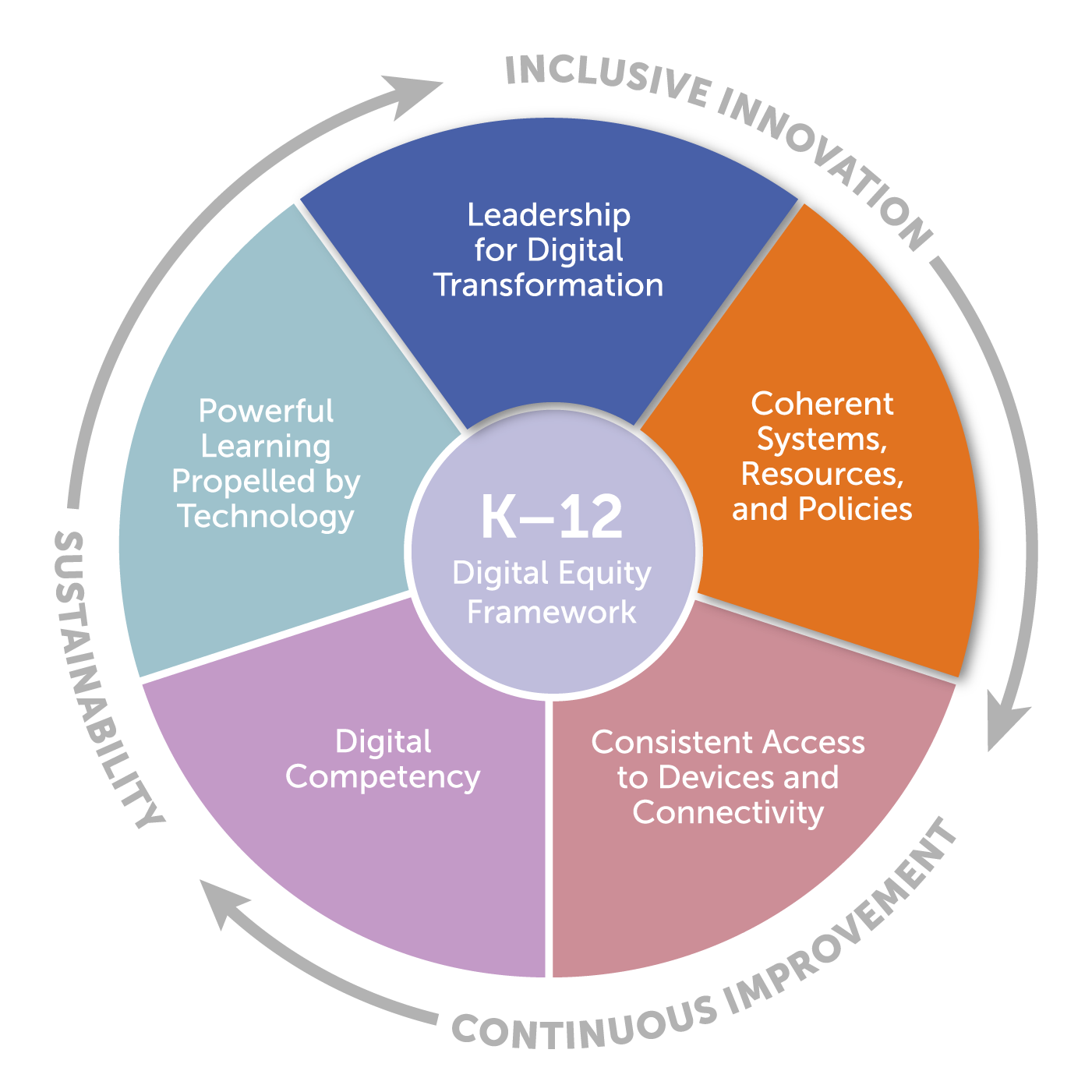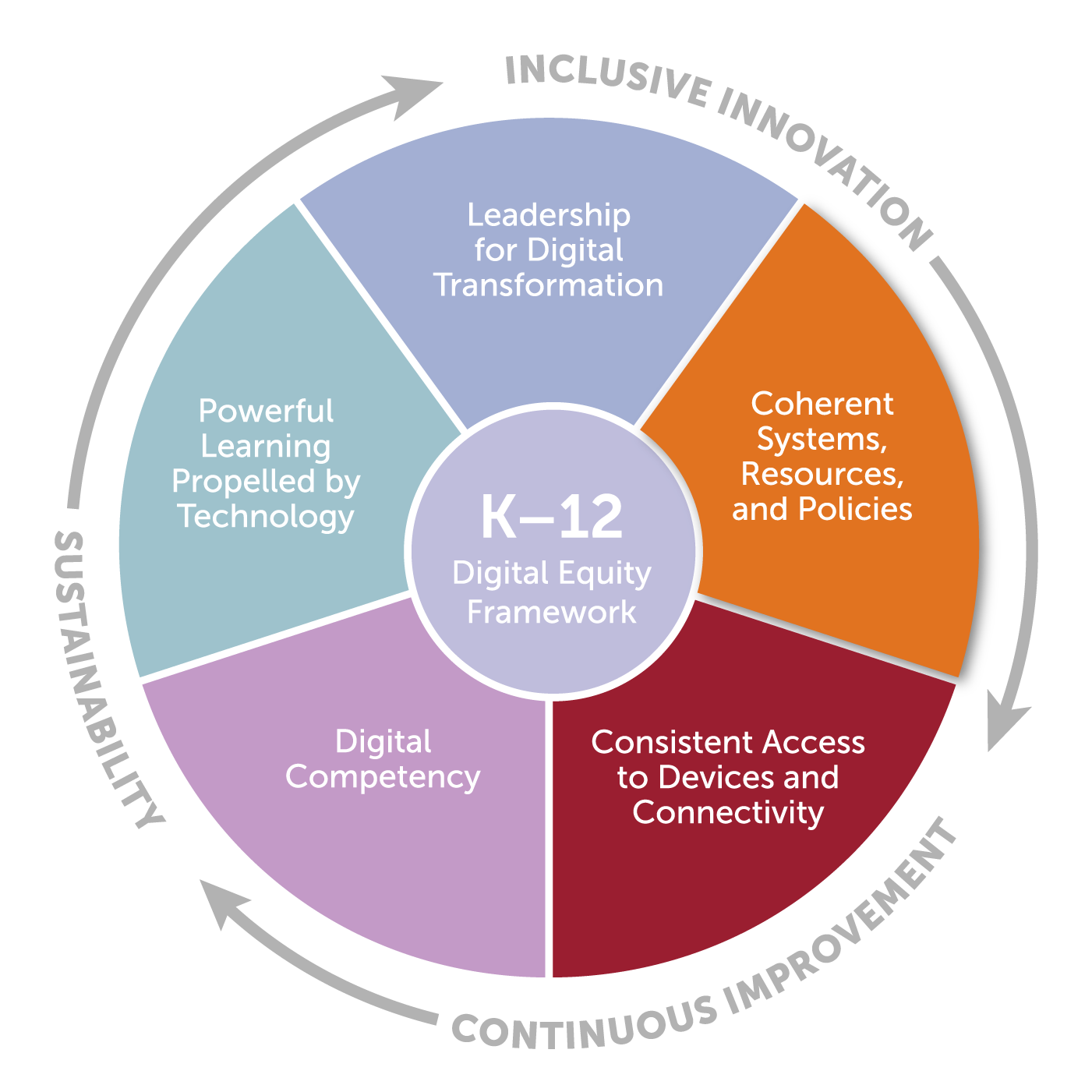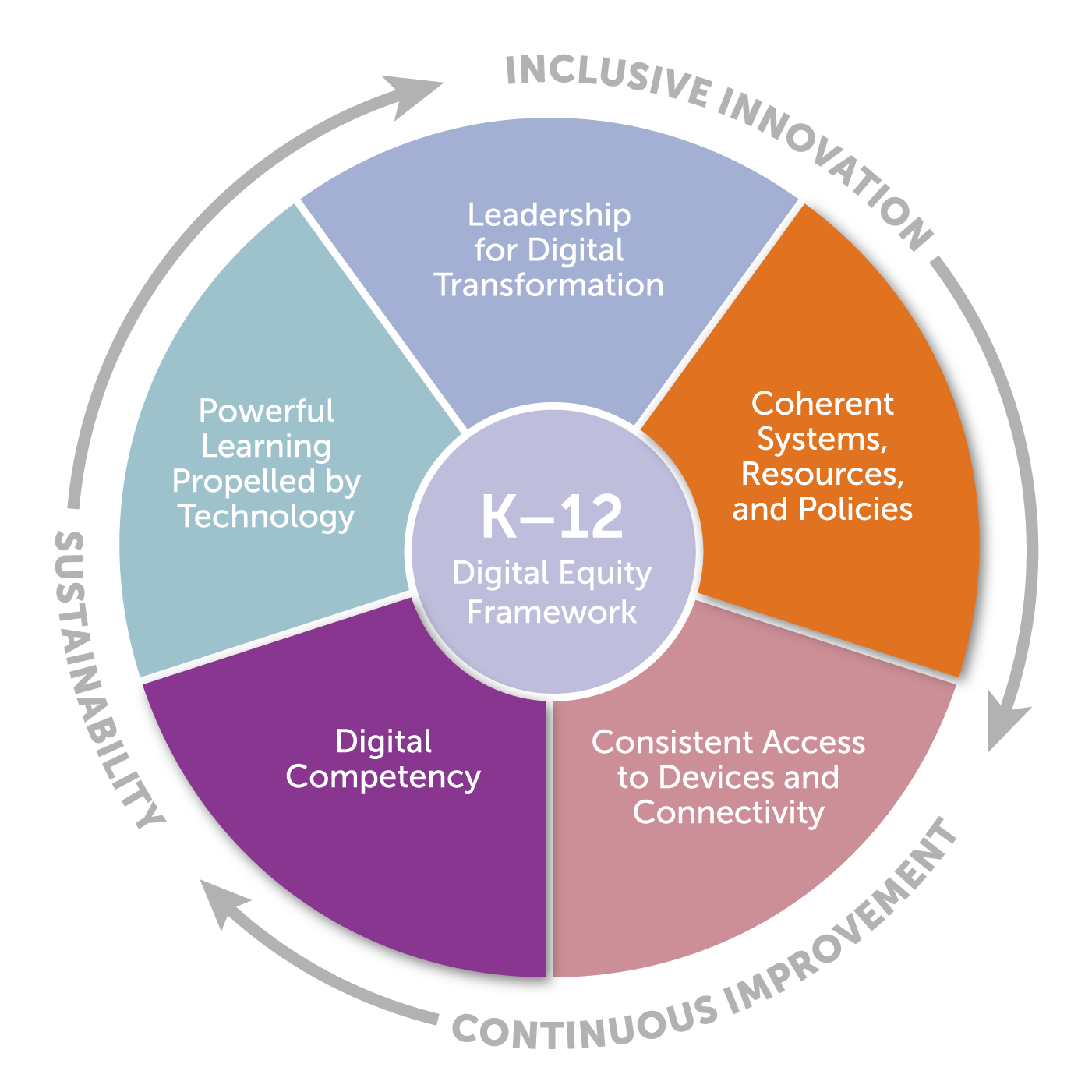This domain refers to the alignment and activation of systems, resources, and policies to a defined strategic and continuous improvement plan for deep technology integration. This alignment results in remarkable coherence across all organizational functions, which, in part, manifests in funding technology in full; support for it through approved policies, including those that ensure data privacy and ongoing procurement of devices and emerging technologies; and integration of technologies into core systems, such as structured professional development activities.

The domain indicators provide guidance on what school and district stakeholders need to accomplish to activate the domains. Hitting these “markers” signal that schools and districts are making progress toward triggering each domain in full.
Essential Question: In what ways is your vision for technology present across all systems, resources, and policies as a means to support long-term development and application of powerful learning?
Organizational functions align seamlessly with the vision for digital equity, ensuring a cohesive and integrated approach across all district and network operations, as evidenced by:
Resource allocation processes reflect a commitment to digital equity, particularly in technology integration and professional learning related to digital competencies. These processes leverage a diverse range of funding sources, including partnerships and grants, to ensure that all students and staff have access to the necessary tools, infrastructure, and training. Evidence of this commitment includes:
Policies with technology implications (including teaching, learning, and human capital teams) are collaboratively developed and data-driven, with a focus on maintaining data privacy and security. The district establishes a clear organizational structure and process for policy development, documentation, and communication, as shown by:
Evaluation systems for teachers and staff are collaboratively designed to align with equitable technology use practices, enhancing student learning outcomes through inclusive innovation, demonstrated by:
The Digital Equity Competencies for K-12 School Systems define what teachers, instructional technology coaches, and administrators (inclusive of district, school, and IT leaders) need to know and be able to do—and the mindsets they need to have—to activate each of the five domains collectively.
The Digital Equity Framework offers a holistic approach to bridging the digital teaching and learning divides. The framework’s emphasis on interdependence across domains ensures that all aspects of digital equity are addressed. Below are examples that highlight some of the interdependencies across multiple domains:
 Coherent Systems, Resources, and Policies and…
Coherent Systems, Resources, and Policies and…Strong leadership is essential for developing and implementing coherent systems, resources, and policies that support digital equity.
Coherent systems, resources, and policies, in turn, provide the necessary foundation for leaders to effectively enact their vision for deep technology integration.

Coherent systems, resources, and policies are necessary to ensure consistent access to devices and connectivity for all stakeholders.
Consistent access to devices and connectivity, in turn, enables the effective implementation and utilization of coherent systems, resources, and policies to support digital equity.

Coherent systems, resources, and policies can facilitate the development of digital competencies by providing the necessary support, resources, and opportunities for learning and growth.
As stakeholders develop digital competencies, they are better equipped to contribute to the development and implementation of coherent systems, resources, and policies that support digital equity.